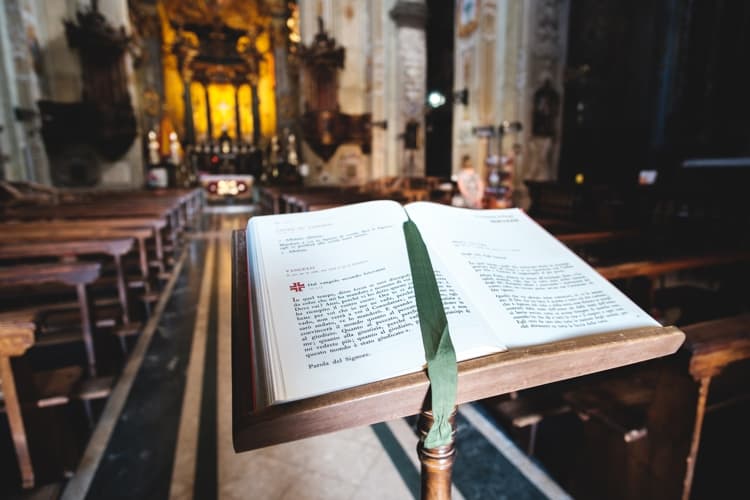The Public Reading of Scripture

It may be one of the most disobeyed commands in Scripture: “Until I come, devote yourself to the public reading of Scripture, to exhortation, to teaching” (1 Timothy 4:13). We do pretty well with the exhortation and teaching parts, but I’m concerned by how little attention we give to the public reading of Scripture.
Surprisingly, many mainline churches read Scripture more than evangelical ones. Their furniture highlights this priority: they devote a reading stand for this sole purpose. They feature not one but up to four separate readings from Scripture: from the Hebrew Scriptures, Psalms, New Testament, and Gospels. Even their liturgy is full of the words of Scripture.

On the other hand, many evangelical churches claim to prioritize Scripture, but pay scant attention to reading Scripture as an important part of public worship. Evangelical worship leaders tend to speak extemporaneously, and don’t always carefully read Scripture into their comments.
It’s time to reclaim this neglected priority in our churches.
The Power of the Word
In his book The Word-Centered Church, Jonathan Leeman makes a startling claim: “God’s Word, working through God’s Spirit, is God’s primary instrument for growing God’s church.”
God’s Word, he argues, is the most powerful force in the universe. It’s more powerful than our programs, strategies, and personalities. This is the argument of Hebrews 4:12 and 2 Timothy 3:14-17. The Word of God has power.
If this is true, Leeman suggests we ask ourselves “whether that confidence translates into how you…try to lead, structure, and grow your church if you’re a church leader.”
One easy way to translate our confidence in God’s Word is simple: to prioritize the reading of Scripture in our public worship.
Made to Be Read
The priests read from the law in Ezra’s day. Jesus read from Isaiah in the Nazareth synagogue. The Hebrew Scriptures were regularly read in synagogue worship. Christians imported this practice into the church.
The New Testament itself repeatedly commends this practice:
I put you under oath before the Lord to have this letter read to all the brothers. (1 Thessalonians 5:27)
And when this letter has been read among you, have it also read in the church of the Laodiceans… (Colossians 4:16)
Blessed is the one who reads aloud the words of this prophecy… (Revelation 1:3)
In his First Apology, Justin Martyr described the worship of early Christians around the years 155-157:
On the day called Sunday, all who live in cities or in the country gather together to one place, and the memoirs of the apostles and the writings of the prophets are read, as long as time permits; then, when the reader has finished, the president speaks, instructing and exhorting the people to imitate these good things.
The testimony of Scripture and practice of the early church agree: God’s Word is made to be read.
Three Suggestions
- If you’re a pastor, include the public reading of Scripture as a key part of every worship service.
- Occasionally read extended sections of Scripture. When beginning a new series on a book, consider making the first sermon a simple reading of the entire book when possible.
- Train your people to read well using a book like Unleashing the Word or even this short article by Tim Challies.
One of the simplest and most powerful positive steps we can take in our churches is to recover the public reading of Scripture.





